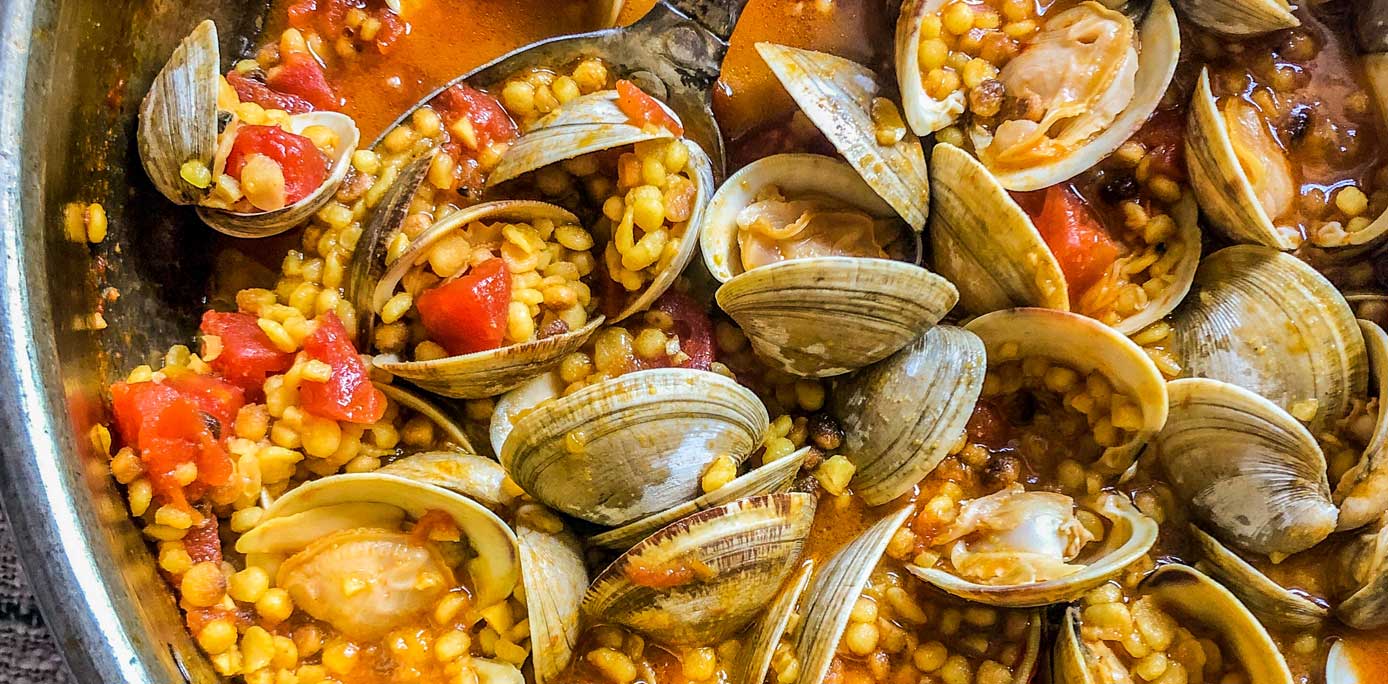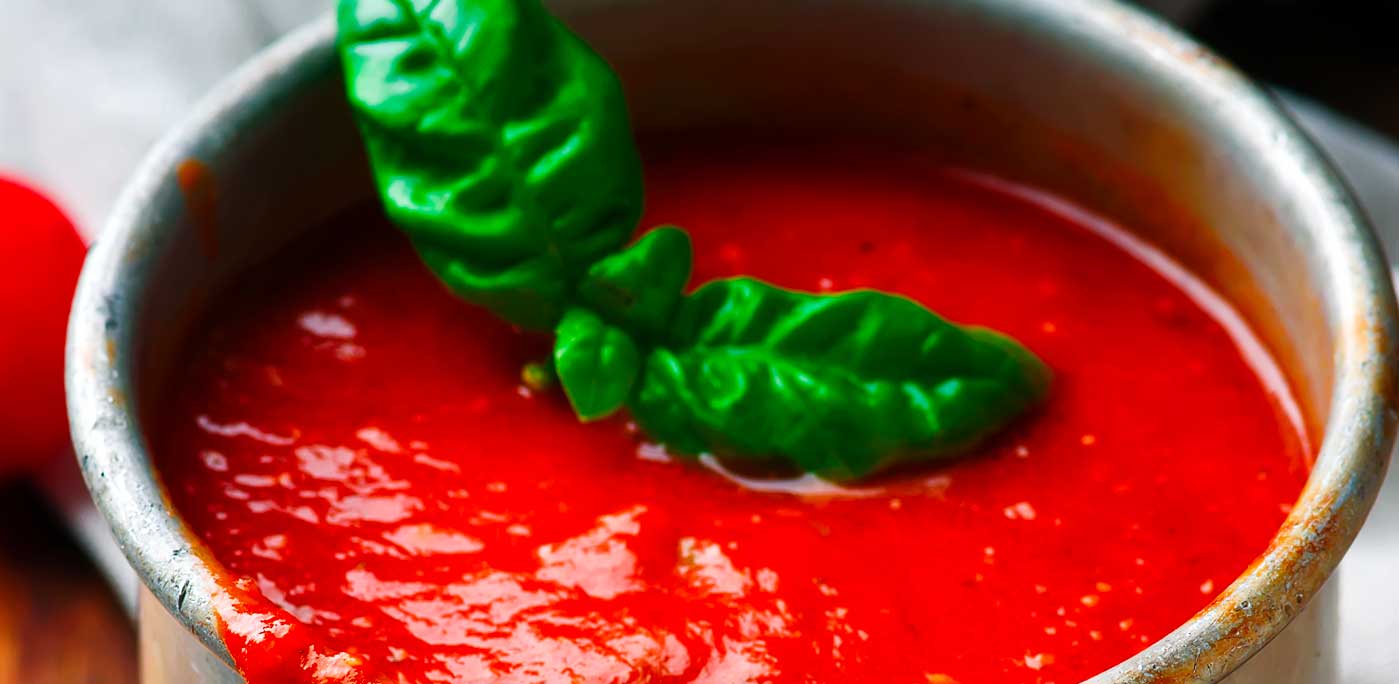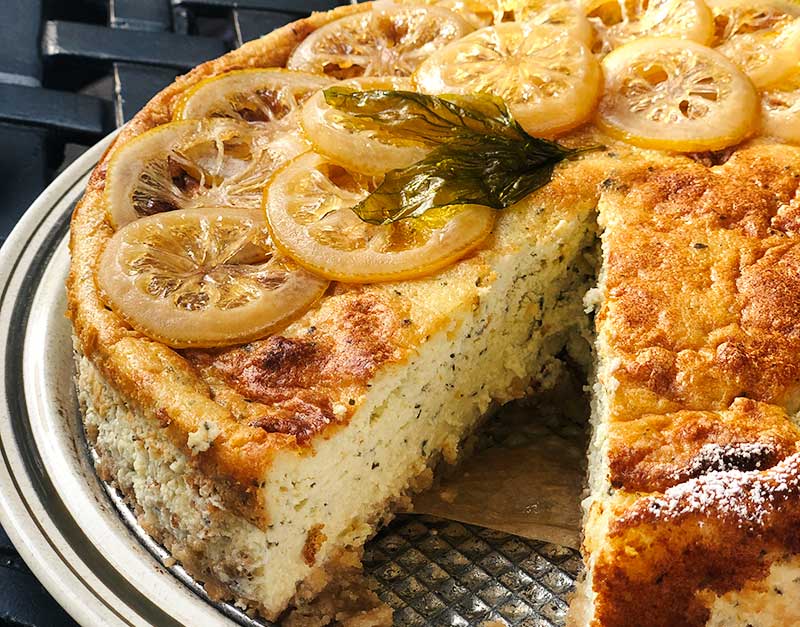I was re-arranging my pantry recently and found a package of Sardinian fregola. Memories came flooding back of my trip to this wonderful island back in 2008 and, as importantly, to the amazing food of the island.
I had come to the island as part of my quest to visit as many of the Italian islands as I could. Sardinia itself was breathtaking… from the hues of blue that were the sea to the interior mountains covered with sheep to my favorite town that was Bosa on the western edge, where the water was the bluest of blues, where the air smelled of salt and brine.
This little town with a river running through it, rose up and up from the sea, its homes brightly colored, the streets wavy and uneven from the cobblestones. You could feel the souls of centuries past as you walked through the streets of the old village. I still to this day remember that feeling as I walked up to the fortress at the top.
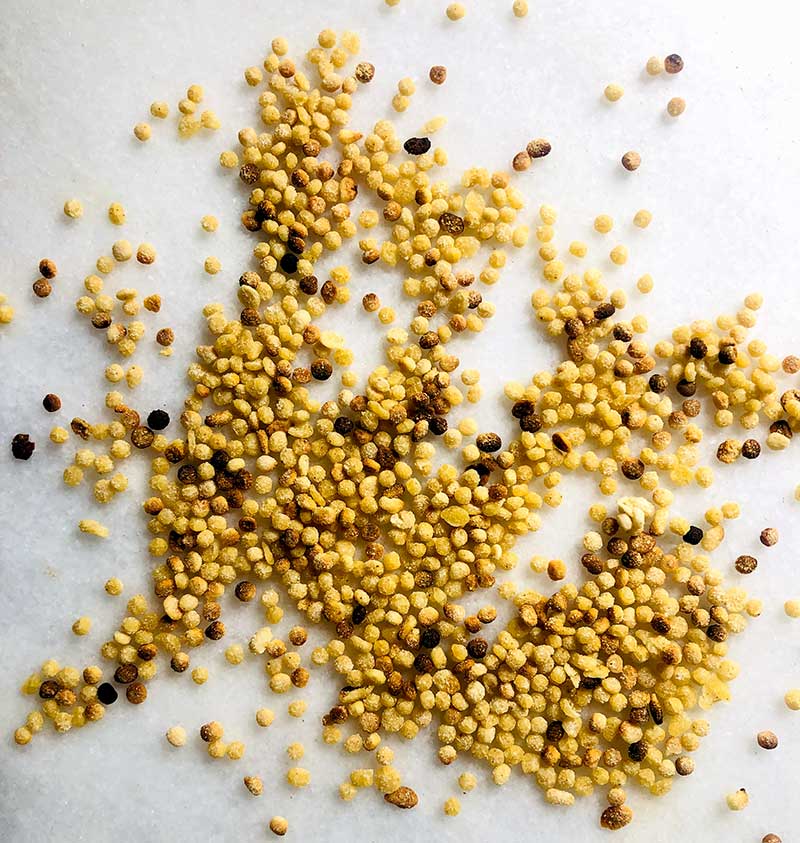
Fregola is a typical pasta from Sardinia, reminiscent of cous cous ©M. Becci
On one bright sunny day, I stumbled across a little restaurant set right on the sand at the sea. In front of me was a dish made from the smallest, most tender little clams, which I have come to learn are called arselle. The broth was the deepest red, spiked with saffron and the toasty fregola soaked up all the wonderful flavors as it swam in this heavenly combination.
Sardinia’s invaders and settlers have heavily influenced Sardinian distinctive cuisine. Given Sardinia’s strategic location in the Mediterranean Sea, the constant wave of invaders has left the cuisine of the island heavily influenced by nearby Italy but also by the far away shores of southern Europe and Africa. Sardinian fregola is a great example of this, as it closely resembles couscous, although the little balls are larger than typical couscous. The pasta is also toasted, giving any dish from which it is made a wonderfully nutty flavor.
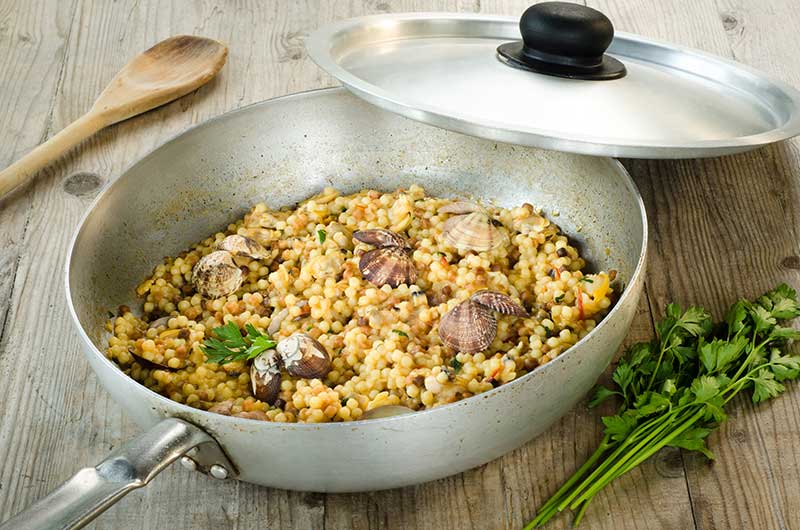
Fregola is a typical pasta from Sardinia, which is slighlty toasted © Alessio Orrù | Dreamstime.com
Fregola has also been gaining in popularity in this country and is much easier to find than in years past. If you can find yourself a bag of this wonderful pasta, do not hesitate for a second. You of course can find it easily online these days. If you do buy, give this simple recipe a try. You will not be disappointed.
Buon appetito,
Michele
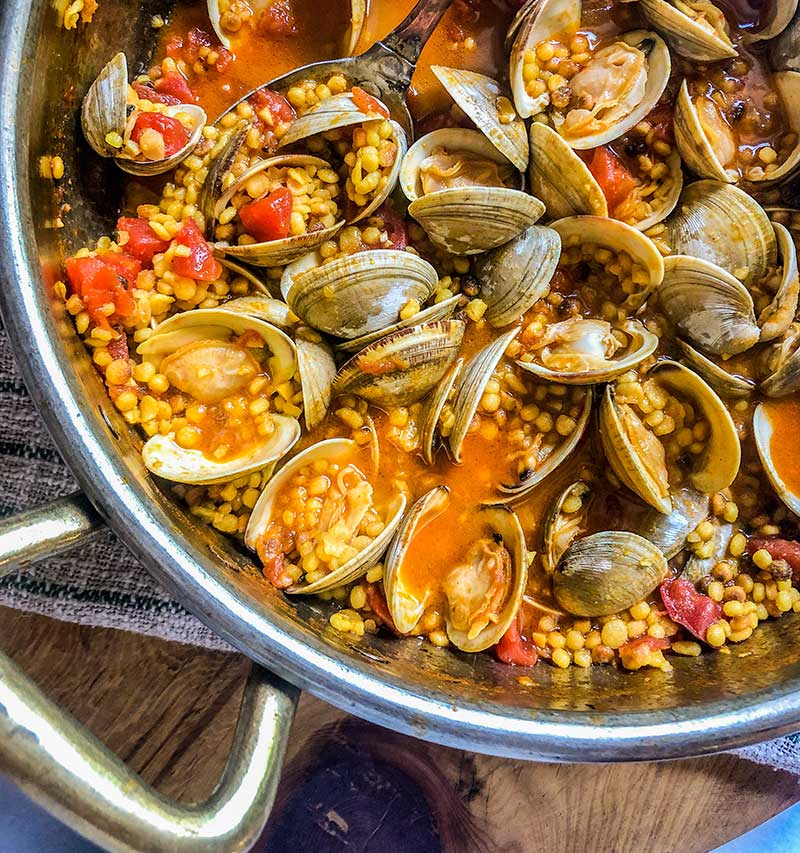
This dish is enriched by the addition of fresh parsley, used often for pasta dishes with clams ©M. Becci
Sardinian Fregola with clams
Ingredients:
•4 dozen littleneck clams, scrubbed and rinsed
•1/3 cup extra-virgin olive oil
•Healthy pinch of saffron
•3 garlic cloves, minced
•1 cup dry white wine
•About 2 cups diced tomato (either canned or fresh plum tomatoes)
•Pinch of hot red pepper flakes
•2 tablespoons coarsely chopped flat-leaf parsley
•Kosher salt
•Freshly ground black pepper
•2 cups clam stock (other stock may be substituted)
•2 cups water plus additional if needed
•2 cups fregola
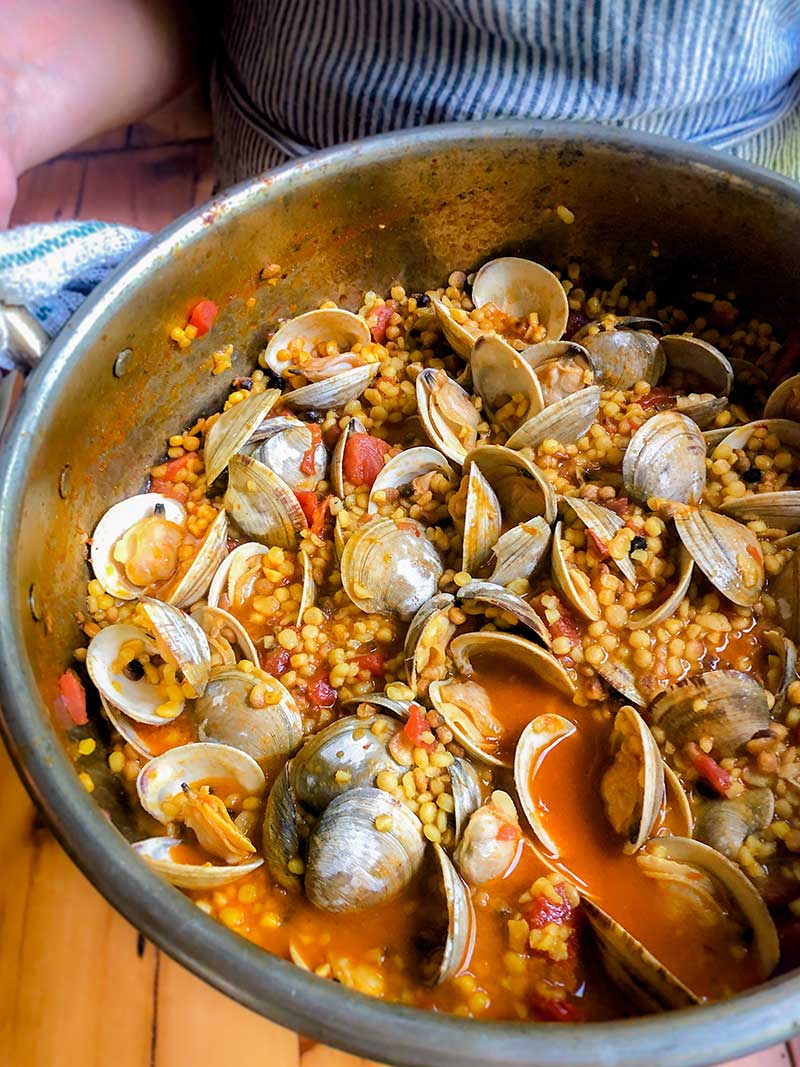
Fregola with clams is a summery dish, typical in Sardinia ©M. Becci
Directions:
Rinse and scrub the clams. Discard any with broken shells. Purge the clams of sand by covering them in a large bowl with salt water. (You want the taste of the water to be similar to seawater.) Allow the clams to purge for about an hour. Drain them, being careful not to pour the grit back over them.
In a large wide skillet, heat a few tablespoons of olive oil and add in the clams. Cover tightly and shake the pan until the clams start to open. As they open, remove them to a bowl. Discard any that have not opened. Turn off the heat. Strain the liquid produced, add the saffron to it and allow to bloom while you prepare the rest of the dish. Set the clams and the liquid aside.
Heat the remaining olive oil in a large heavy pot. Add the minced garlic and cook over moderately high heat for approximately 30 seconds. Add the white wine and simmer for few minutes. Add in the diced tomatoes and a pinch of hot pepper flakes. Bring to a boil then reduce to a simmer and cook until the tomatoes soften (abut 10 minutes). Add in the reserved clam juice and parsley and simmer for approximately 5 minutes. Taste the broth and adjust seasonings (as clams are usually very salty, I find I typically only need to add pepper).
Add in the stock and 2 cups of water. Bring to a boil and add the fregola. Cover and reduce heat to a simmer. Cook, stirring occasionally, until the fregola is tender to the bite (about 15 minutes). If the mixture becomes too thick, add more water to thin.
Put the clams back into the wonderful broth to reheat for a few minutes and then you are ready to serve! Sprinkle with additional chopped parsley and serve immediately with freshly warmed toasted bread.
Joe and Michele Becci are a brother and sister team who love all things Italian. Together, from opposite coasts, they co-author the blog www.OurItalianTable.com.
